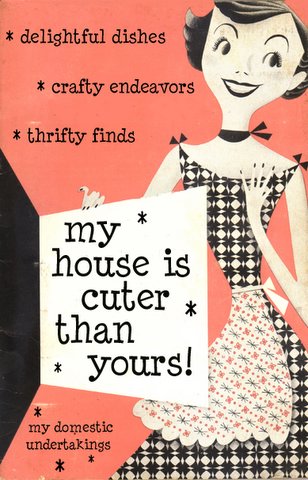About a year and a half ago I attended a lecture at a rural library that was about the history of feed sacks. The lecturer was a collector and also a curator for a rural local history museum. I hadn't had much of an interest in feed sacks before because they are kinda like Pyrex to me. Too trendy and over priced. However I did love learning about the history and ingenuity people used with them. The photo above shows a cute little chicken pot holder made from feed sack material along with a ball of the very durable cording that held the sacks together.
The lecturer brought a bunch of samples of material from her own collection and from the museum.
Also a display of several aprons made from feed sacks.
Samples of quilting squares.
Children's clothing.
Curtains.
Even an uncut embroidery pattern for matching collar and cuffs.
The library has it's own mini museum dedicated to their local rural history. In the general store area were these samples of feed sacks with paper labels attached.
This was one of my most favorite lectures given by the library system. The lady doing the lecture was spunky, well educated on the subject, had a typed up pamphlet on the history of feed sacks for all the attendants , and had a question, answer and share at the end. There were a bunch of ladies who had brought samples of feed sack material they owned and shared stories about how feed sacks were used in their homes while growing up.
Here's some feed sack material nutshell info:
*The chain-stitched thread (as seen above top photo) was saved and used to crochet and knit with.
*Originally the company logos on the sacks were printed with water soluble ink which housewives would soak off to reuse the fabric.
*In the mid 1920s mills started adding patterns to the fabric along with paper labels which were easy to remove.
*You had bragging rights if you were a "two feed sack girl", which was the equivalent of wearing a size two dress.
*Wives would instruct their husbands to buy particular prints so they would have enough for certain projects.
*In addition to all over prints there were also border prints perfect for pillowcases and curtains.
*There were Disney and Gone with the Wind prints.
*Some sacks had patterns for doll clothing and stuffed toys.
*Magazine and pattern companies published patterns for feed sack usage.
*During WWII when fabric was rationed it did not apply to feed sacks since it was seen as an industrial textile product.
*Feed sack material usage lasted into the 1970s.
I spoke with the lecturer at the end of the presentation about how to distinguish if fabric is feed sack which she explained a few physical things to look for along with just getting a "feel" for it once you've handled some.
I went home and went through my fabric stash and lo and behold....
That's in the next post!










No comments:
Post a Comment